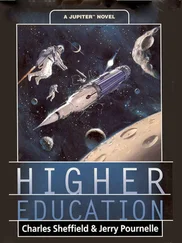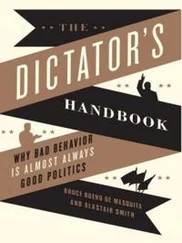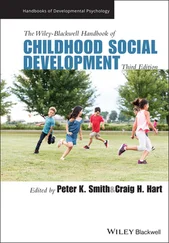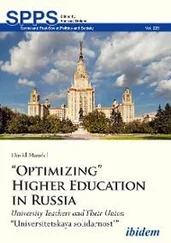Q10 was associated with CO3 and it was evaluated whether the student has developed this. This indicates the ability of applying a problem statement and the data given, and solving the problem accordingly. The CO3 was mapped with CEO1 and CEO2 and it was found that the extent of the correlation was 77% while mapping the CEO1 and CO3. For mapping between CEO2 and CO3, the situation was found to be somewhat bleak, namely at 54%.
The objective questions Q3, Q6, and Q8 were mainly associated with CO1 for attaining some fundamental knowledge of signal processing. The objective questions were not direct or rote‐learning based but required lot of thinking and analysis. The students could answer these questions only if the course was fundamentally strong for the candidate. In addition, the mapping was estimated between CO1 and the related objectives CEO2. For questions Q3, Q6, and Q8, we observed the percentage of mapping as 34, 67, and 46% respectively for one candidate among 120 students. This indicates that the attainment for this student is satisfactory in Q6 but needs improvement for the other two questions.
Similarly, we performed the analysis and mapping assessment for Q1, Q2, Q4, Q5, Q7, and Q9 which are descriptive questions.
3.2.4 Topic Level Mapping
As we know, each program has a number of courses and each course has a set of topics that are covered during the conduction of semester. So, when we discuss CEOs and COs, we should also reach up to the topic level for mapping; this would strengthen the mapping outcome and assessment of SLOs in the students. For example, the course ECE 4X09 has the following objectives:
To understand basics of signals and systems (CEO1).
To interpret the working of system and its characteristics (CEO2).
To enumerate the examples of practical systems and their elementary processing (CEO3).
The same course has following learning outcomes to be attained at the completion of the course:
The students will be able to define and identify various types of signals and systems (CO1).
Students will be able to explain the real‐time applications of various systems (CO2).
Students will be able to simulate the signals and design typical systems for real‐time applications.
The next stage is mapping between objectives and outcomes, and the COs can be realized in all the course topics, especially in the way the topics are handled during delivery of course. The major topics or the course are definition, types, and classification of signals and systems; elementary signals; representation of signals; definition and characteristics of systems; signal processing using ordinary filters; transforms used in signal processing. If these topics are mapped into any of COs, that would be the best possible scenario for attainment of learning outcomes in the students. There might be more ways to evaluate SLOs in addition to those we have discussed in previous sections and used in our case studies. For example, homework, research projects, essays, report writing, case study analysis, independent study, and other verbal quizzes.
3.3 Current Research on OBE
We explored the amount of research contributions in recent years in the area of OBE, SLOs, and sustainable goals in higher education. These contributions include research papers, articles, patents, and others. We have attempted to find out the research impact in these research fields, exploring some important databases, namely Google Scholar, Science Direct, ACM Digital Library, and Wiley Library. Our findings are summarized in Table 3.4, where it is very clear that the research impact in OBE in general is higher than that of SLOs. While investigating the amount of research, we observed that generalized theories and significance are much researched, in comparison with the actual assessment tools and their impact, especially in the areas of SLOs. Overall, research activities in a focused manner, need to be much strengthened.
Table 3.4 Research impact in OBE (last five years).
| Research area |
Number of research contributions |
| Google Scholar |
Science Direct |
ACM Digital Library |
Wiley Library |
| Outcome‐based education (OBE) |
901 000 |
191 213 |
152 932 |
142 247 |
| Assessment of student learning outcomes |
157 000 |
31 754 |
145 258 |
82 003 |
| Sustainable goals in higher education |
193 000 |
47 054 |
131 806 |
29 755 |
When we look at all 17 SDGs, we see that SDG 4 primarily deals with the higher education sector. This does not mean that other goals are to be achieved in complete isolation, rather there should be interrelation with educational goals. The following goals are associated with SDG 4 directly or indirectly:
Gender equality (SDG 5) and good health (SDG 3) (UNESCO 2019) (TWI2050 – The World in 2050 2018)
Descent work and economic growth (SDG 8) (UNICEF 2019)
Reduced inequalities (SDG 10) (Pizarro Milian and Davies 2020)
Sustainable communities (SDG 11) (UNICEF 2019)
Climate action (SDG 13) (Franco et al. 2019; Kioupi and Voulvoulis 2019; Leal Filho et al. 2019; UNESCO 2019)
Peace and justice (SDG 16) (Kioupi and Voulvoulis 2019)
The above SDGs do have a close association with education either directly or indirectly. For example, we aim at gender equality in providing access to education for all and, in reciprocation, the education and awareness among the general populace would also help in eradicating the menace of gender inequality. Thus, the educational goals and other SDGs actually help in transforming society and mankind so that everyone on the planet can lead a happy and healthy life. Good health is not accessible to most underprivileged people for two main reasons: the first is lack of financial ability and the second, which is an even more important factor, is related to education and proper awareness. Sometimes people suffer and die despite the health facilities and cover supported by government because the knowledge about accessing the facilities available does not exist. The economic growth of an individual as well as a country is predominantly affected by the quality of education. Through good quality education, research can be carried out and funds generated, and competent graduates who have passed through the OBE system will be capable of self and the national growth. Education, if truly imparted and evaluated, helps in addressing a number of societal issues that prevail in the society. Those who are properly educated will also be responsible citizens and will be sensible toward climate, nature, environment protection, societal values, and peace and justice for all. When we explored the research activities on major components and goals of sustainable development, we found that very limited research has been done – a situation which needs immediate attention. Research in education pedagogies and delivery is equally important as that which we do in other fields of science, technology, and engineering.
In a UNICEF (United Nations Children's Emergency Fund) report (UNICEF 2019), 1.8 billion children will be in middle‐ and low‐income countries, out of which 420 million of them will not learn basic skills and 825 million will not acquire basic secondary level skills. This is an alarming situation which needed to be tackled by the world community so that every person has an equal opportunity to learn and to develop skills. An even more important factor than the quantity of learning is the quality of learning. The developed nations might step up and help low‐ and middle‐income countries to elevate their education standards and make the basic infrastructure available so that each child can learn, but what is more important is the quality learning that depends on the ways in which teaching learning take place. The TLP has to be steered in a such a manner that the appropriate set of skills is developed in most children. In the UNICEF report, it is mentioned that a nineteenth‐century education system cannot fulfill the requirements of twenty‐first‐century learning and this is why OBE is of the utmost importance; the OBE framework makes sure that learning takes place properly and leaves a unique mark in learners in the form of skills.
Читать дальше












